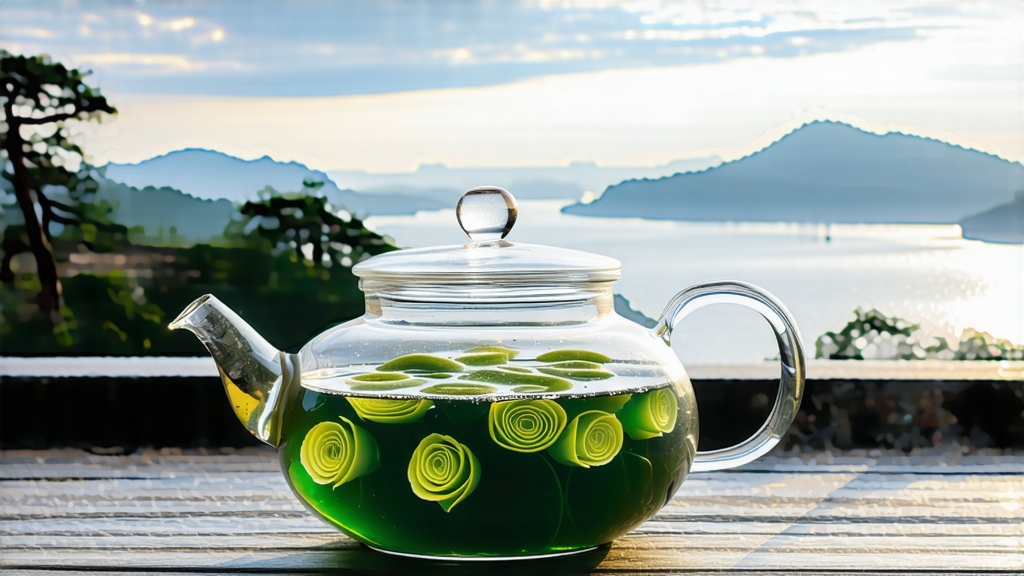
Biluochun, whose name translates literally to “Green Snail Spring,” is one of China’s ten most celebrated teas, yet it remains a quiet treasure beyond the country’s borders. Produced only in a micro-zone where the eastern edge of Jiangsu Province meets the freshwater vastness of Taihu Lake, this tea is prized for its improbably tiny spiral shape, downy silver tips, and a fragrance so delicate that locals claim the leaves once absorbed the scent of peach, plum, and apricot trees blooming among the tea bushes. To understand Biluochun is to step into a 1,200-year chronicle of imperial taste, Buddhist monks, and lake-cooled terroir that cannot be replicated anywhere else on earth.
Historical whispers place the tea’s birth during the Tang dynasty (618-907 CE), but credible written records begin in the late Ming, when the Kangxi Emperor (r. 1661-1722) tasted it on an inspection tour south of the Yangtze. Startled by its “scary aroma” (xia sha ren xiang in the vernacular of court diarists), he rechristened the originally prosaic “Xia Sha Ren Xiang” with the more elegant title “Biluochun.” The new name captured both the leaf’s jade-green color (bi) and its snail-like curl (luo), while invoking the season of earliest spring harvest (chun). From that moment, tribute quotas were fixed: the entire crop of the best 6.5 square kilometers on Dongting Mountain was reserved for the throne, carted north each Qingming Festival before the first rain had dried on the leaf.
Geographically, Biluochun is inseparable from Taihu Lake, China’s third-largest body of fresh water. The lake acts as a thermal regulator, creating morning fog that filters sunlight and lengthens the budding season. Two islands in the lake—Dongting East and Dongting West—are the official core zones; elevations are modest (under 200 m), but the slope angle, granite sub-soil, and constant humidity mimic the misty ravines usually associated with high-mountain teas. Around the tea gardens, fruit growers continue the inter-cropping tradition: peach, plum, loquat, and apricot trees are planted every few rows. When these bloom in late March, their nectar drifts onto the nascent tea buds, contributing to the tea’s legendary fruity top note that chemists attribute to elevated linalool and geraniol levels.
Although all Biluochun is green tea, the market distinguishes four sub-styles based on pluck standard and finishing technique. “Supreme Supreme” (Te Ji) consists solely of single buds weighing 3–5 mg each, picked within a five-day window before Qingming. “Supreme” (Te Ji) allows one bud and one unfolded leaf. “First Grade” (Yi Ji) relaxes the standard to one bud and two leaves, while “Second Grade” (Er Ji) may include a slightly larger leaf set. Purists argue that anything beyond First Grade forfeits the name, yet modern commerce stretches the term to cover lake-shore teas picked until early May. Within each grade, two stylistic forks exist: the traditional “Sheng Qing” (raw-green) method that emphasizes grassy freshness, and the newer “Qing Xiang” (light-aroma) profile that borrows low-temperature baking from Anhui greens to create a creamier, nuttier cup.
The crafting choreography begins the same dawn the buds are plucked. Pickers, overwhelmingly women who have worked the same family plots for generations, wear bamboo hats but no gloves to avoid bruising. Leaves are deposited in shallow bamboo baskets no deeper than 10 cm to prevent crushing. Within two hours, the baskets descend by foot to lake-level workshops where the withering stage is skipped entirely—Jiangsu greens prize immediate enzyme kill. Instead, the leaves are “shao qing” (pan-seared) in woks heated to 180 °C for precisely 30–40 seconds. The tea master’s bare hand becomes the thermometer: when the leaf feels hot enough to sting but not scorch, he flicks the batch into a second wok whose temperature has been lowered to 80 °C. Here the signature rolling begins. Palms press the leaves against the wok wall in a clockwise motion, curling each sprout into the tight spiral that will lock in flavor. The motion is so intricate that apprentices train for three years on discarded leaf before touching the premium grade. Once the moisture drops to 30 %, the